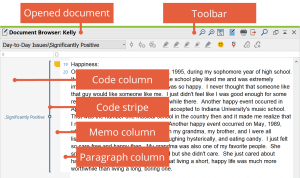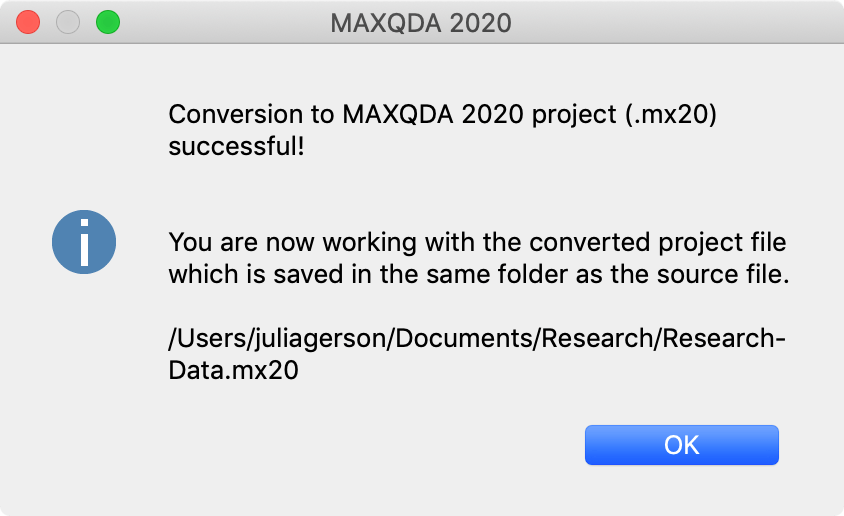
Codeline: Switch from “Minute” view to “Seconds” view for media files that are up to 10 minutes long for more detail in analysis.Document Comparison Chart:Double-click a cell to select the according range in Document Browser.Code Relations Browser: Calculate symbol sizes by total or for each row or column.Code Matrix Browser: Show an existing Summary as a tooltip while hovering over a node in a visualization.Code Matrix Browser and Code Relations Browser: Sort columns by code occurrence to identify similarities and differences.Document Browser: Local search now starts directly in the currently visible area of a document.Document Variables: Automatically created variables for text and PDF documents show the number of pages, paragraphs, sentences, words, and characters in each document.

This option is initially set to 3, but can be set to any number between 1 and 99. Word Frequencies and Word Combinations: New option to limit the results table to words and word combinations that occur at least x times.Word Frequencies: New options to ignore hyperlinks, e-mail addresses, hashtags, numbers, or text within square or curly brackets.Word Matrix Browser: Create a visual matrix that displays how often search items, dictionary words, or words from the go list occur in documents, document groups, or document sets.Memos: The title of a memo can be twice as long (127 instead of 63 characters).Memos: Include the content of in-document memos as “in-line” text while exporting a document.Memos: Include linked coded segments and code names in memo exports.PDF: New option to ignore dashes within words while using a (lexical) search or analyzing word frequencies.PDF: Rotate pages of a PDF document within the Document Browser.Smart-Coding-Tool:Select multiple coded segments at once and drag them to a code for additional coding or re-coding.Smart Coding Tool: New ribbon bar for easy feature access including a new option to display an additional column for each of your “Favorite variables”.Codes:When selecting text or images, the last used codes have been added to the right-click context menu so you can quickly apply them again.Codes: If you merge codes into another code an audit trail with the merge date and information is added to the code memo.

Overview of Coded Segments: While sorting the table by document name the names are sorted alphanumerically so that letters and numbers are taken into account.Overview of Coded Segment: New option to activate all documents containing any of the displayed segments.

Varied approaches to qualitative data analysis inform how we discuss the functions of software. We keep the subject matter of other chapters in mind as the step by step tasks in these pages get deeper into the interpretive and interrogation processes of analysing different media. Experimenting with these processes where relevant in your chosen software will help to become familiar with useful entities in the software. In Chapter 5 to help get you started, we talk about productive things you can do in the early stages of setting up a ‘project’ in software. See Download area for data and working projects. Note that once you are working in a software ‘project’ there is no clear linearity or set sequence in the way things have to be achieved though exercises are related to each sequenced Chapter. They provide a selection of ideas for analytic actions using focus group data and survey data froma spread sheet.

MAXQDA 11 provides a simple interface and intuitive tools to handle qualitative and mixed methods analysis, tabulated panes, interrogation and mapping functions are applicable to multiple data media. We thank Graham Hughes and Stefan Radiker (of Verbi) for contributing to these companion web pages.


 0 kommentar(er)
0 kommentar(er)
